DoubleSight DS-277W: Back to the Drawing Board
by Chris Heinonen on June 13, 2012 1:30 AM EST27” panels so far have seemed to do better with display uniformity than smaller displays. The larger size requires a more powerful lighting system and in implementing this it has also been more uniform as well. Here the DS-277W does fairly well, with a couple of darker corners causing a drop but most of the screen staying fairly close to the 200nits we are targeting.
With a black screen the uniformity continues to be decent, with light leakage on one side but the rest of the display keeping close to the same as the center. This was a very good result for the black level in comparison to other displays.
Thankfully this performance does carry over to the color uniformity across the screen. It was established that at 200 nits the DS-277W was a good performer, and it looks like that carried over to the uniformity. The lower-left corner is a little off, but the rest are very close to a dE of 2.0 or below which is good. I will admit to being pretty surprised by how good the results were, but it seems that at 200 nits the DS-277W is a good performer.
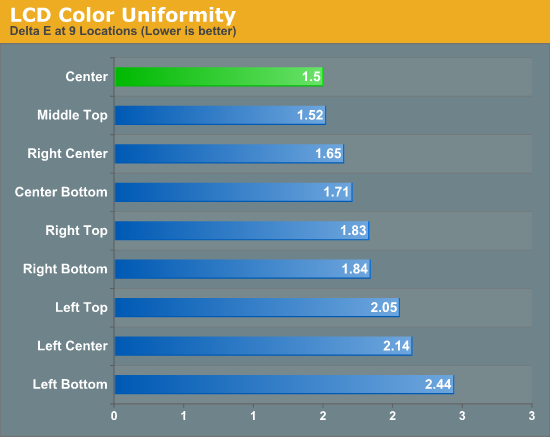


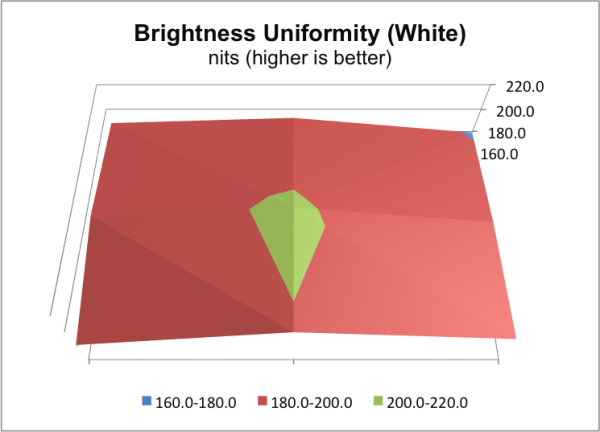
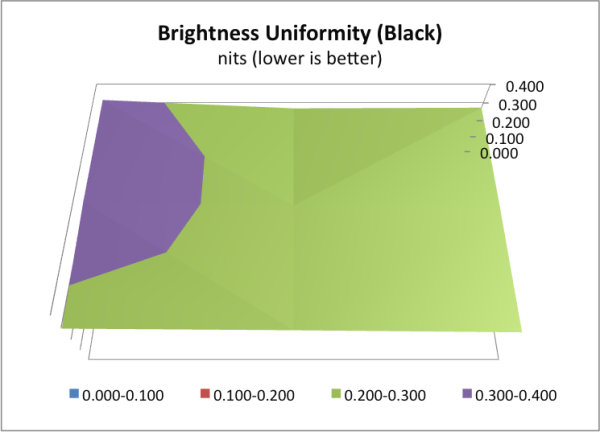
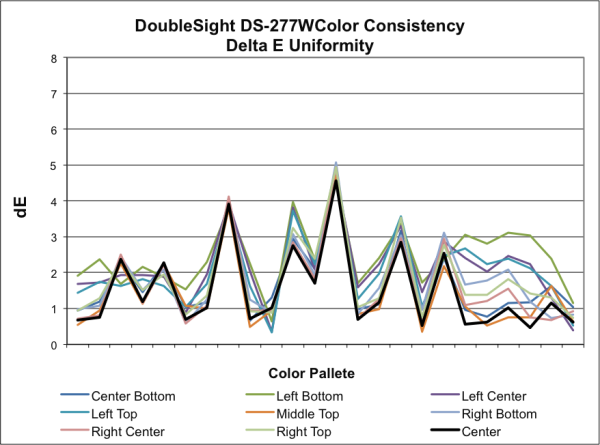
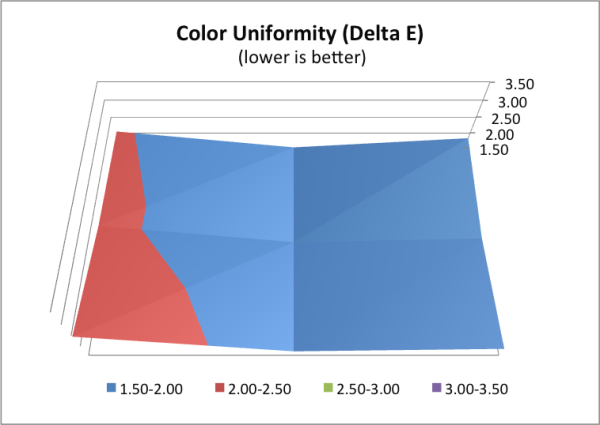








55 Comments
View All Comments
esSJae - Thursday, June 14, 2012 - link
FireWire was the only solution for external hard drives until USB 2 came out. I had FW on my Dell work laptop back in 2002.FireWire was also great because you could chain devices together.
Zoomer - Wednesday, June 13, 2012 - link
nVidia, AMD and Intel have all committed to DP. They will start the phase out of DVI, probably by going to just 1 TMDS per card. Why get something that's going to be a 2nd class interface standard really soon?Most cards, even lower end ones, have come with DP for years now.
Guspaz - Wednesday, June 13, 2012 - link
My current videocard has DP. My current monitor (a Dell U2711) has DP. My monitor came with a DP cable. As a result, I'm using DP to connect my monitor.There is, however, one major downside: if both HDMI and DP plugs are connected to an nVidia card, it boots on the HDMI port. This means that on my computer, I only see the BIOS and boot screens on my home theatre projector, not my LCD monitor... this is really dumb.
Zoomer - Saturday, June 16, 2012 - link
It's a software issue that will be fixed. Maybe ask nvidia/your card manufacturer?Dug - Wednesday, June 13, 2012 - link
Thunderbolt uses the same connection as display port (mini) so I don't see it going away.SodaAnt - Wednesday, June 13, 2012 - link
Well, I am that one person. I have a Dell Precision m4600 that I connect to my Dell u3011 with a displayport cable, no adapters involted.LordOfTheBoired - Wednesday, June 13, 2012 - link
I use DP. And I adopted it before Apple did.It's a good standard, and it deserves more support than it's getting right now.
Also, Apple's new "best interface ever" is Thunderbolt. Which... uses DP for video, and the now-standard mini-DP connector.
InsaneScientist - Wednesday, June 13, 2012 - link
Every single person I know who has a WQXGA (2560x1600) or WQHD (1560x1440) monitor (myself included) has it connected using Display Port.HDMI never seems to work despite the fact that HDMI 1.4 supposedly will, and dual-link DVI (as already mentioned) is a pain since you have to make sure that the port that you're connecting to is dual link and the cable is dual link...
An $8 Display Port cable just works... assuming that the monitor supports it.
Oh, and none of the people I know with monitors at that resolution are mac users, ironically enough.
JarredWalton - Thursday, June 14, 2012 - link
Apparently everyone with a 30" WQXGA or 27" WQHD display that you know also purchased their displays relatively recently (last couple of years). I've got a 30" display and it's using DL-DVI; same goes for most others with 30" displays that I've met (all five or so of them!) But for newer displays yes, DP is becoming far more mainstream.Voo - Saturday, June 16, 2012 - link
Actually I do use DL-DVI on my relatively new Dell U3011 - why?Because Dell included the DVI cable but no DP cable in the package and I really don't see any advantages in DP over DL-DVI.